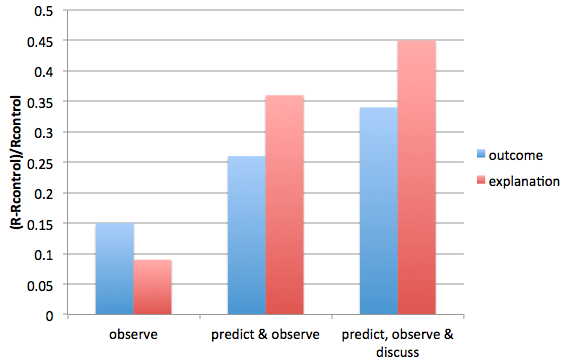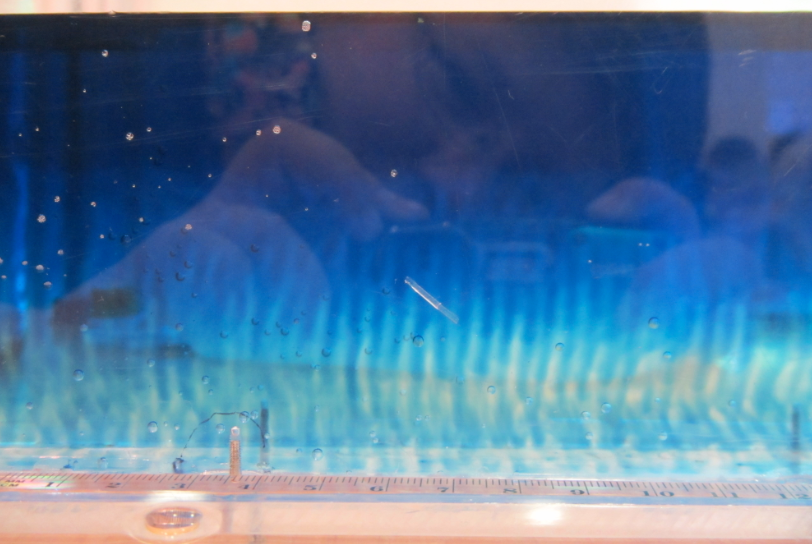Showing demonstrations might not be as effective as you think.
Since I was talking about the figures I bring with me to consultations yesterday, I thought I’d share another one with you. This one is about the effectiveness of showing demonstrations in the classroom.
As you might have noticed following this blog, I’m all for classroom demonstrations. In fact, my fondness for all those experiments is what led me to start this blog in the first place. But one question we should be asking ourselves is for what purpose we are using experiments in class: “Classroom demonstrations: Learning tools or entertainment?”. The answer is given in this 2004 article by Crouch et al., and it is one that should determine how exactly we use classroom demonstrations.
The study compares four student groups: a group that watched the demonstration, a group that was asked to make a prediction of the outcome and then make a prediction and then watched the demonstration, a group that was asked to make a prediction, watched the demonstration and then discussed it with their peers, and a control group that did not see the demonstration. All groups were given explanations by the instructor.
So how much did the groups that saw the demonstration learn compared to the control group? Interestingly, this varied between groups. Tested at the end of the semester without mentioning that a similar situation had been show in class, for the outcome, watching the demonstration led to a learning gain* of 0.15, predicting and then watching lead to a learning gain of 0.26 and predicting, watching and discussing lead to a learning gain of 0.34. For a correct explanation, this is even more interesting: watching the demonstration only lead to a learning gain of 0.09, predicting and watching to 0.36 and predicting, watching and discussing to 0.45.

Learning gains found by Crouch et al (2004) for different instructional methods of classroom observations.
So passively showing demonstrations without discussion is basically useless, whereas demonstrations that are accompanied by prediction and/or discussion lead to considerable learning gains, especially when it comes to not only remembering the correct outcome, but also the explanation. Which ties in with this post on the importance of reflection in learning.
Interestingly, in that study the time investment that led to the higher learning gains is small – just two extra minutes for the group that made the predictions, and 8 minutes for the group that made the predictions and then discussed the experiment in the end.
Since you are reading my blog I’ll assume that you don’t need to be convinced to show demonstrations in your teaching – but don’t these numbers convince you to not just show the demonstrations, but to tie them in by making students reflect on what they think will happen and then on why it did or did not happen? Assuming we are showing demonstrations as learning tools rather than (ok, in addition to) as entertainment – shouldn’t we be making sure we are doing it right?
—
* The learning gain is calculated as the ratio of the difference between the correct outcomes of the respective groups and the control group, and the correct outcome of the control group: (R-Rcontrol)/Rcontrol. For the actual numbers, please refer to the original article.

